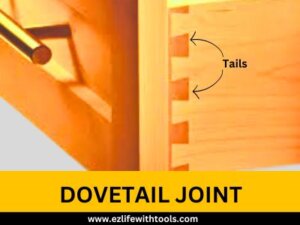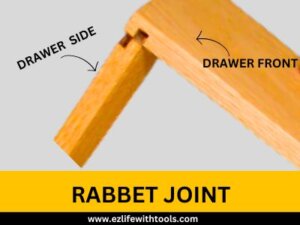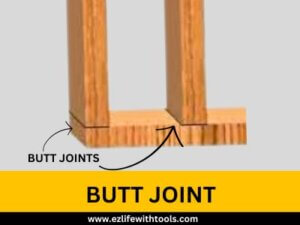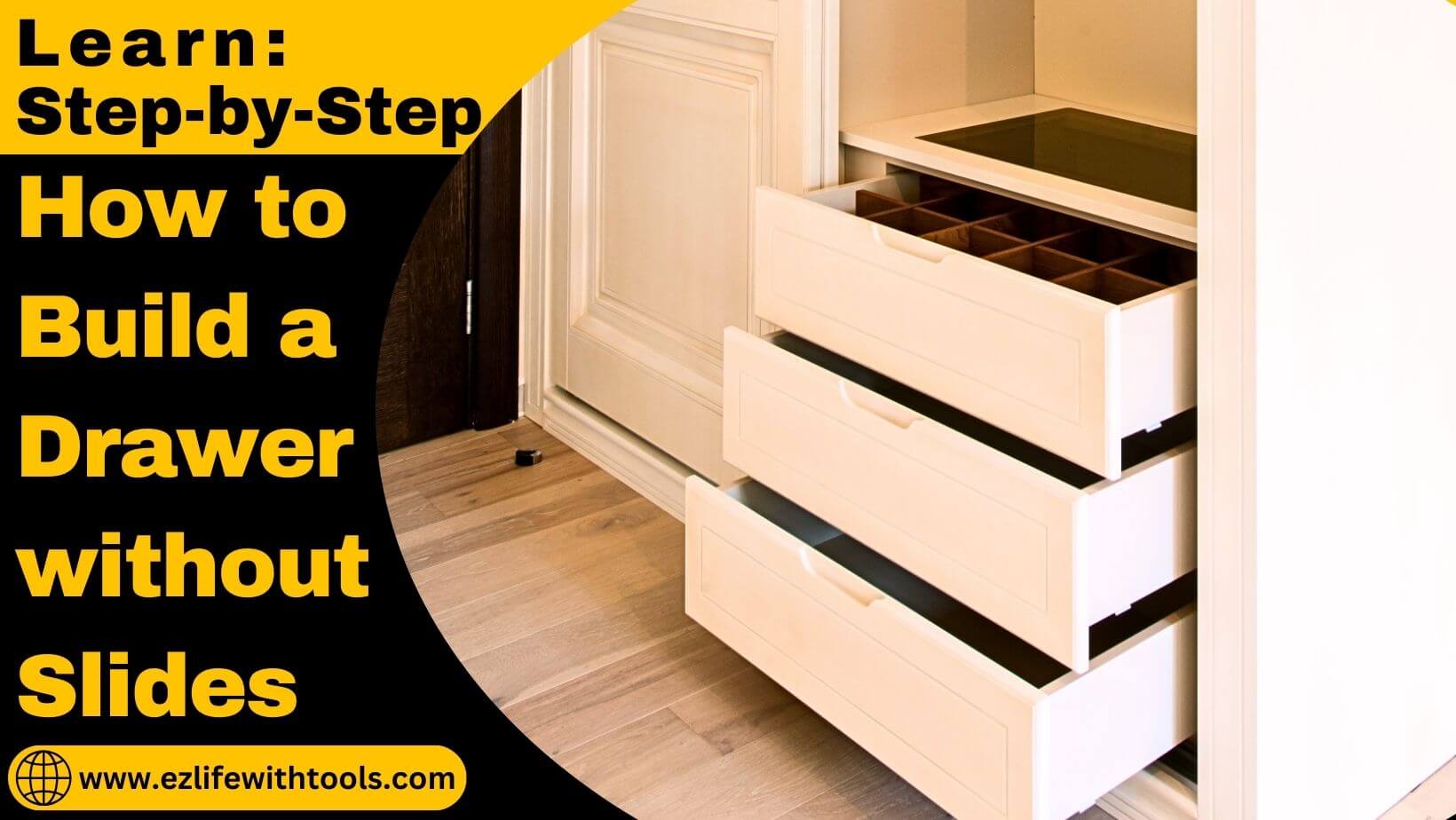Learn: How to Build a Drawer without Slides Step-by-Step
The conventional use of drawer slides has been the standard for decades. However, an emerging trend is

moving forward to build drawers without slides. This alternative method not only provides a unique approach but also provides an opportunity to develop creative craftsmanship and cost-effective solutions.
This article will help you to understand the step-by-step process of constructing drawers without slides, with insights into materials, techniques, and practical applications.
By adopting this unconventional method, you’ll not only uncover the advantages but also discover how this approach can revolutionize your woodworking projects.
No problem, whether you’re a seasoned woodworker or a DIY enthusiast.
This article will work the same and definitely provide valuable knowledge to enhance your skill set and broaden your design possibilities.
So, stay with me to uncover and understand this art.
Basic Components of Building Drawers
The anatomy of the drawer is so simple; it consists of several fundamental components like a drawer box (front, back, sides and bottom), a front-facing panel, and handles for functional holding.
Functionality of Drawer With and Without Slides
Drawer With Slides: Traditional drawer slides consist of mechanical components like ball bearings or rollers that help with the smooth opening and closing of drawers. These types of drawers can be created in various types, including side-mounted, under-mounted, and center-mounted slides.
Drawer Without Slides: Building a drawer without slides involves various techniques that replace the functionalities offered by traditional slides. Instead of relying on specialized moving hardware, this method works better for woodworking joinery and construction principles to achieve smooth movement and functionality.
Drawer Designs for Various Purposes Without Slides
Drawers can be designed in various shapes for various purposes.
Here, we will describe the basic designs without slides.
- Utilitarian Drawers: These consist of simple box-like structures with functional aspects commonly used in workshops or storage areas.
- Decorative Drawers: These drawers have unique shapes and can be intricately designed for contrasting wood types, often seen in fine furniture pieces.
- Specialty Drawers: These drawers consist of specific designs catering to unique needs, such as file drawers, cutlery drawers with dividers, or hidden drawers within furniture.
Techniques for Drawers Without Slides
There are three major techniques to create the drawers without slides. We will explain each of them one by one.
- Building Drawers with Dovetail Joints Technique
- Building Drawers with Rabbet Joints Technique
- Building Drawers with Butt Joints Technique
1- Building Drawers with Dovetail Joints Technique

Dovetail joints are famous for their strength and decorative appeal. Creating a sturdy connection between drawer sides depends on the dove and tails interlocking them. These dovetail joints can be created by a skilled woodworker by hand or with a dovetail jig.
These joints also have variations, such as half-blind dovetails concealing joint ends for a cleaner look while dovetails showcasing the joint from both sides.
2- Building Drawers with Rabbet Joints Technique

Rabbet joints consist of a groove or notch into both pieces of wood, and both grooves can be fitted into each other. This type of joint provides good surface area for gluing and enhancing stability.
Fitting both ends into each other provides a strong joint.
3- Building Drawers with Butt Joints Technique

Butt joints are basic and straightforward and generally weaker compared to other joint types. They require some extra dowels, screws, or biscuits to provide strength and stability.
Materials and Tools Required for Building Drawers
When you construct any wood project, you require basic and necessary materials and tools to complete the project.
Here is a list of necessary materials and tools for constructing a drawer without slides.
Necessary Materials for Building Drawers
- High-quality wood (Hardwood, Softwood)

How to Build a Drawer without Slides - Glue
- Screws
- Nails
- Dowels
- Plywood for the drawer bottom
- Drawer front material according to design
- Varnish / Paint for finishing
Essential Tools for Building Drawers
- Measuring and Marking Tools: Tape measure, combination square, marking gauge, or marking knife for accurate measurements and layouts.
- Cutting Tools: Table saw, circular saw, jigsaw, or handsaw for cutting wood to required dimensions.
- Joinery Tools: Router, chisels, dovetail saw, biscuit joiner, or doweling jig based on the chosen joinery method.
- Assembly Tools: Clamps, hammer, screwdriver, or nail gun for assembling drawer components securely.
- Sanding and Finishing Tools: Sandpaper, sanding blocks, paintbrushes, or sprayers for smoothing surfaces and applying finishes.
How to Build a Drawer without Slides Step-by-Step
Here I will explain each and every step in simple way for you better understanding. Please read and follow all the steps. Let’s get start.
- First, measure the intended space for the drawer, considering its width, depth, and height.
- Sketch with dimensions needed for the drawer components.
- Mark the dimensions on the specific wood sheets for the drawer’s front, sides and bottom with the help of a marking gauge.
- Cut the wood pieces for the drawer box, front, back, sides, and bottom one by one according to the marked size on the project with the help of any saw.
- Create joint ends on the appropriate wooden sheets according to your selected joint (Dovetail Joint, Rabbet Joint, Butt Joint) technique.
- Assemble the drawer pieces without glue to ensure they fit accurately.
- If it requires any necessary adjustments, do it.
- Apply wood glue between the joints and clamp the drawer components together firmly.
- Remove excess glue with a clean cloth and let it dry.
- To create a smooth surface, use sandpaper.
- Apply varnish or Paint to protect the aesthetic appearance of the surface.
- Join the drawer front and drawer box corners with the help of screws and make sure that it aligns with the overall design.
- Test the drawer’s movement within the cabinet or furniture piece.
- If you find any mistakes or necessary adjustments in smooth opening and closing, do it and the final test.
- Congratulation! You have done it.
Advantages and Disadvantages of Building Slide-less Drawers
Advantages
- Building drawers without slides can be more economical because it eliminates the need to purchase expensive drawer slides.
- Available greater customized design flexibility options.
- Due to fewer moving parts, slide-less drawers require less maintenance.
- Easy to repair if any issues arise.
Disadvantages
- Without slides, drawers might experience increased friction and wear over time, potentially affecting smooth operation.
- Building slide-less drawers requires higher woodworking skills and precision in joinery for structural integrity.
- Achieving consistently smooth drawer movement without slides might require meticulous construction and adjustment.
Conclusion
Drawers can be created with and without slides. Both works but have some advantages and disadvantages due to the joinery techniques.
In the above-given article, I have explained very well how to build a drawer without slides.
It’s your choice to choose the appropriate method according to your project needs.
Thank you for your time.
Best wishes

